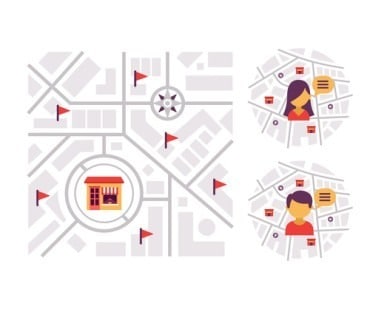
Continuous intelligence offers benefits that can help companies better optimize, predict, and automate processes for greater business value.
At the Data and AI Forum last fall, I gave a presentation on how continuous intelligence (CI) can address critical questions for the modern enterprise. What if you could analyze data as it’s created? What if you could visualize your business? What if you could better predict your customers’ needs? These and many other issues appeared here in Real Talk in “What Can You Do with Continuous Intelligence?”
To answer these questions, I spoke about three specific use cases. While they span different industries—airline, healthcare, and oil – they share common characteristics of what makes successful CI. Together they teach us about the very real benefits that continuous intelligence can provide in helping companies better optimize, predict, and automate processes for greater business value.
Use Case #1: Airline
One airline customer has more than 20 applications in production for irregular operations. They collect data from many systems throughout the enterprise to maintain the current state of operations. Which passengers and crew are actually on board? Is customer baggage on board the plane? How many hours has the crew flown for the day and month? How many minutes elapsed since each plane pushed back from the gate but not taken off? In flight, where is each plane? What’s the estimated time of arrival?
By knowing so many aspects of their business, the airline can automate many decisions. If a plane is to be late, will that cause the crew to become illegal? That is, they will have flown too many hours either that day or that month to take their next scheduled flight. By knowing exactly which passengers are on late-arriving flights and who has checked in to the crew’s next flight, the airline can make a critical decision – should they cancel that crew’s next flight or call in the backup crew? Then the airline can take the appropriate action to get the backup crew to the flight or rebook passengers.
For that late-arriving flight, should the airline take action to assist connecting passengers? For international travelers or their best customers, they contact the connecting gate agent to hold the plane if it’s a less than 30-minute delay, and it’s that plane’s last flight of the day. They consider it a good business decision to hold a flight in that situation.
Amazingly, at some airports, the baggage can be transferred to connecting flights faster than passengers can deplane and get to their next gate. By knowing which passengers are onboard and predicting who is likely not to make the flight, the airline can hold that passenger’s luggage beside the plane. If the passengers make the flight, their baggage is loaded at the last minute. These actions save precious minutes to help on-time departure statistics. If passengers don’t arrive in time, baggage handlers must search for luggage and remove it from the plane.
Use Case #2: Healthcare
Another use case discussed was Medtronic Sugar.IQ™ personal diabetes assistant, which is exclusively available to Guardian™ Connect CGM customers on insulin injections. Every five minutes, diabetics’ personal sugar levels are uploaded via smart phone. The smartphone application also allows diabetics to add information about exercise and food. This information is uploaded to the streaming engine. AI models are run for each diabetic and compared with 90 days of historical information, which is kept in memory.
Patterns are detected and alerts sent to the diabetic. For example, a patient might get a reminder that eating chicken tacos has previously caused blood sugar to go high. Or that eating peanut butter after exercise has caused the blood sugar levels to go out of range. The pilot group in 2017 of 256 users found that the system had a 90% accuracy level when predicting the risk of hypoglycemia two to four hours in advance. The four-month pilot found 655 hypoglycemic events and 699 hyperglycemic events, and the average of all patients had 36 more minutes each day within their desired sugar level range. By keeping all the data in memory, diabetics can also see their personal history, so that if alerted, they can see exactly what happened in a previous situation.
Use Case #3: Oil Refinery
An oil sand refinery wanted to improve monitoring throughout 35 plants used to mine, transport, and refine tar sands into customer products. The refinery also wanted to optimize production across all plants. The refinery collects data from tens of thousands of sensors to monitor nearly 1,000 key metrics related to the entire production process across multiple sites. Now, in real-time, workers are proactively alerted to process upsets based on thresholds and abnormal rates of change. The streaming engine also makes time-sensitive recommendations to stabilize abnormal situations and minimize economic losses.
With real-time situational awareness throughout the 35 plants, the refinery runs process optimizations in just a few minutes to advise operations management on how to establish ideal control values for each process area. They can re-prioritize these based on the importance of things like maximizing production or minimizing input or variation throughout the day. These optimizations increased revenue by tens of millions of dollars in the first year of operation.
What do these use cases have in common?
Maintaining up-to-the-moment state status allows users to visualize what’s going on. Whether it’s passengers and crew on planes, sugar and exercise levels in a diabetic, or temperature levels in an oil refinery, they know what’s going on right now.
Maintaining historical information allows comparison to create a baseline, update AI models, or to review history to gain new insights. They can answer questions like: Which gate connections will cause missed flights? What situations have led a patient to go out of range? Which optimization suggestions had the best results?
Monitoring and predicting with AI allows companies to derive insights at the most granular level. That is at each crew member’s status, models, and predictions for each individual diabetic and detecting out-of-range situations for each individual sensor at each plant.
Decision optimization based on real-time data allows adjustments to optimize outcomes. For a weather hold at an airport, deciding which planes to divert can be based on who’s on board and their final destinations. For diabetes patients, they can monitor sugar levels more closely after getting a prediction that the diabetic will go out of range in the next two to four hours. For an oil refinery, lowering output in one sub-area of a process at a plant to ensure more efficient utilization at downstream processes at other plants.
Know the past and present. Optimize the future.
Don’t wait – act now and get started today on your continuous intelligence applications.
Read Roger Rea’s other Real Talk articles:









